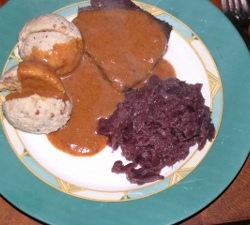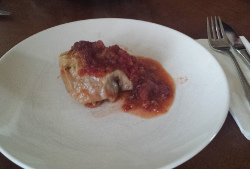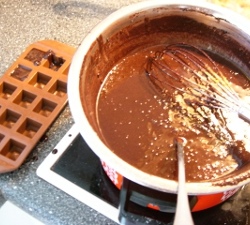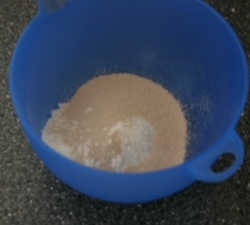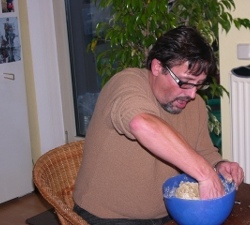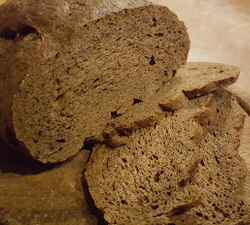Dakos
Veröffentlicht am: Saturday, 04 March 2023 22:38:14.
When we were on vacation on the isle of Crete, one of the most popular appetizers among the German tourists was dakos. One woman from Berlin ate it almost every day. At first, I thought it was just a Greek version of Italian bruschetta: toasted bread topped with tomatoes. But then curiosity got the best of me and I tried it. It was divine! The bread was crispy without being tough. The tomatoes and feta cheese combined beautifully. I had to ask the chef for the recipe.
He was glad to oblige. The crispy bread is called paximadi and was commonly eaten by shepherds out in the fields because of its long shelf life. It's normally very hard, but soaking it with water and olive oil gives it a much more appealing texture. I had to change a few things to make it low-carb, of course, but my first attempt to recreate it at home was a success. The recipe is quite complex, so it takes about three hours to make. But the result is worth it!
Dakos (about 15 slices)
Paximadi
| 150 g | almond flour |
| 100 g | gluten |
| 200 g | yogurt (at least 10%) |
| 2 | eggs |
| 1 TL | Sukrin |
| 4 EL | olive oil |
| 300 ml | water |
| 1 TL | dried oregano |
| 1 TL | salt |
Topping
| 5 | tomatoes |
| 2 EL | olive oil |
| 100 g | feta cheese |
The Recipe:
Separate the eggs. Add a spoonful of Sukrin to the egg whites and beat until stiff. Mix the yolks with olive oil and yogurt. Stir with the mixer at low speed, then add water, salt, and oregano. While continuing to stir, mix in the almond flour and gluten. It should form a nice smooth mass that can still be stirred by the mixer - add a little extra water if necessary. (If the dough is too dry, the beaten egg whites will collapse. If it's too wet, the bread will get moldy within a few days.) Then put the mixer aside and carefully fold in the beaten egg whites.
Place the dough in a baking pan lined with parchment paper and bake at 180° C for 1 hour. Remove the bread from the oven, let it cool, and cut it into 1 cm thick slices. Bake these slices for about 45 more minutes at 150° C.
While the bread's baking, we can turn our attention to the tomatoes. Of course, these should be as aromatic as possible, preferably picked ripe and not from a greenhouse. Cut them into quarters and remove all the soft parts from the center. Then halve each quarter again and place the pieces on a cutting board. Using a sharp knife, separate the flesh of the tomatoes from the skins. (Naturally, we didn't throw the "leftovers" away, but combined them with some salt, garlic, olive oil, and white wine to make a delicious tomato soup. We boiled it for about 10 minutes, strained it, and had a nice refreshment to enjoy while working on this lengthy recipe.) Cut the tomato flesh into small pieces and combine with the oregano, olive oil, and white pepper (not the salt!).
Once everything's ready, we can assemble our dakos. First, brush the paximadi with some olive oil and salt it well. Spread the tomatoes on top. Add some more salt and crumbled feta (sheep feta, if you're feeling adventurous). Food for the gods (Zeus, that is!)
Comments (0)
Melden Sie sich an, um den Artikel zu kommentieren



